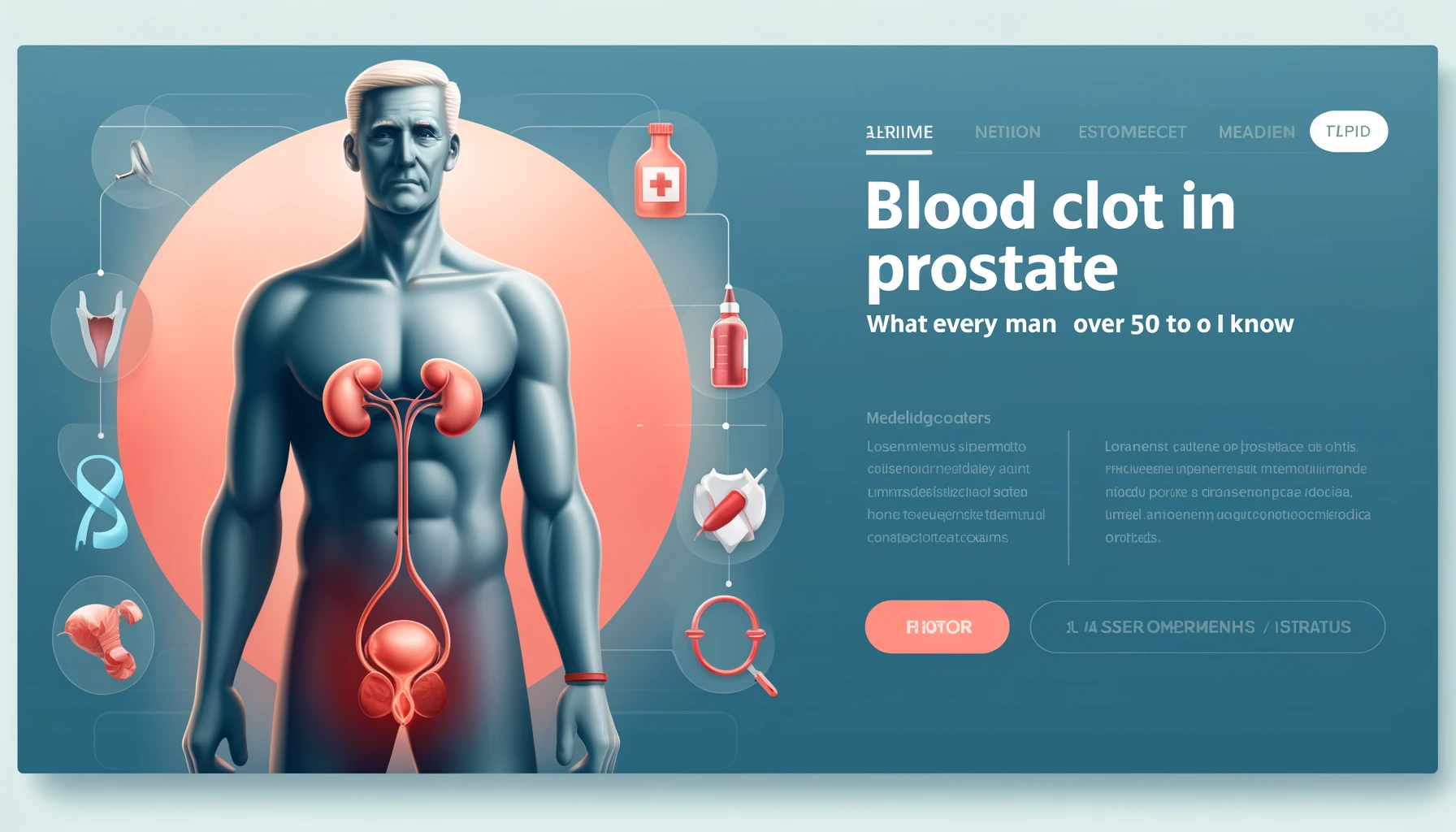16 prostate cancer treatment options to consider and how to prevent prostate cancer
Prostate cancer is expected in the prostate gland, a small walnut-shaped gland in men responsible for producing seminal fluid. In its early stages, prostate cancer may not cause any prostate cancer symptoms.
However, as cancer progresses, it may cause urinary problems, pain, or erectile dysfunction. The treatment options for prostate cancer depend on various factors, such as the stage and grade of cancer, the patient’s age and overall health, and personal preferences.
In this section, we will provide a more in-depth look at the different aspects of prostate cancer treatment, including the goals of treatment, factors influencing treatment decisions, and the importance of a multidisciplinary approach.
Contents
- 1 1. Surgery for Prostate Cancer Treatment
- 2 2. Radiation Therapy for Prostate Cancer Treatment
- 3 3. Cryotherapy for Prostate Cancer Treatment
- 4 4. Hormone Therapy for Prostate Cancer Treatment
- 5 5. Chemotherapy for Prostate Cancer Treatment
- 6 6. Immunotherapy for Prostate Cancer Treatment
- 7 7. Active Surveillance and Observation for Prostate Cancer Treatment
- 8 8. Comparing Treatment Options for Prostate Cancer Treatment
- 9 9. Prostate Cancer Prevention
- 10 Conclusion
- 11 FAQs
- 12 Reference
- 13 Men's Health Related Articles
1. Surgery for Prostate Cancer Treatment
Surgery is a standard treatment option for prostate cancer, particularly for cancer confined to the prostate gland. The primary surgical procedure for treating prostate cancer is radical prostatectomy.
This section will discuss the types of radical prostatectomy, potential side effects, and recovery after surgery.
Types of Radical Prostatectomy
There are different types of radical prostatectomy, which include:
Open Radical Prostatectomy: This traditional approach involves making a single long incision in the lower abdomen to access and remove the prostate gland and nearby tissues[9]. Open radical prostatectomy is less common now due to the development of minimally invasive techniques.
Laparoscopic Radical Prostatectomy: In this minimally invasive procedure, the surgeon makes several small incisions in the abdomen and inserts specialized instruments, including a laparoscope (a thin tube with a camera), to remove the prostate gland[9].
Robotic-Assisted Laparoscopic Radical Prostatectomy: This procedure is similar to laparoscopic radical prostatectomy. However, the surgeon uses a robotic system to control the instruments, providing greater precision and control during the surgery[9].
Potential Side Effects of Prostate Surgery
Surgery for prostate cancer may cause some side effects, such as:
Urinary incontinence: Some men may experience difficulty controlling urine after surgery, which usually improves over time.
Erectile dysfunction: The nerves responsible for erections may be damaged during surgery, leading to erectile dysfunction. In some cases, nerve-sparing techniques can be used to minimize this risk.
Infertility: Since the prostate gland and seminal vesicles are removed during surgery, men will no longer produce semen, resulting in infertility.
Recovery After Surgery
Recovery time after prostate surgery varies depending on the type of procedure and individual factors. Generally, hospital stays range from one to three days, and patients may need a urinary catheter for a week or two after surgery.
Full recovery can take several weeks, and patients are encouraged to increase their activity levels gradually. Regular follow-up appointments are essential for monitoring any signs of cancer recurrence or surgery-related complications.
In summary, surgery for prostate cancer, particularly radical prostatectomy, is a standard and effective treatment option for localized disease. The choice of surgical approach depends on factors such as the patient’s overall health and the surgeon’s expertise.
Understanding the potential side effects and recovery process can help patients make informed decisions about their treatment options.
2. Radiation Therapy for Prostate Cancer Treatment
Radiation therapy is a standard treatment option for prostate cancer, which uses high-energy rays or particles to destroy cancer cells. It may be used for early-stage prostate cancer, locally advanced cancer, or as a soothing treatment for advanced cancer.
This section will explore the different types of radiation therapy, their potential side effects, and the factors that influence the choice.
Types of Radiation Therapy
There are three main types of radiation therapy used for prostate cancer:
External Beam Radiation Therapy (EBRT): In EBRT, a machine delivers beams of high-energy radiation to the prostate gland from outside the body. Various techniques may be used in EBRT, such as intensity-modulated radiation therapy (IMRT) and stereotactic body radiation therapy (SBRT). Treatment sessions typically last a few minutes and are administered daily for several weeks[10].
Brachytherapy: Also known as internal radiation therapy, brachytherapy involves implanting tiny radioactive seeds directly into the prostate gland. These seeds emit radiation over time, gradually killing the cancer cells. There are two types of brachytherapy: low-dose rate (LDR) and high-dose-rate (HDR) brachytherapy[10].
Radiopharmaceuticals: This treatment involves injecting radioactive substances into the body, which are then taken up by the cancer cells. Radiopharmaceuticals are typically used for advanced prostate cancer that has spread to the bones[10].
Potential Side Effects of Radiation Therapy
Radiation therapy for prostate cancer may cause side effects, such as:
Urinary issues: Some men may experience difficulty controlling urine, increased urgency or frequency, or pain during urination.
Bowel problems: Radiation therapy can cause diarrhea, rectal bleeding, or discomfort during bowel movements.
Erectile dysfunction: The nerves responsible for erections may be affected by radiation, leading to erectile dysfunction.
Fatigue: Patients may feel tired or sleepy during and after radiation therapy.
Most side effects are temporary and gradually improve after the completion of treatment.
Factors Influencing the Choice of Radiation Therapy
The choice of radiation therapy depends on various factors, such as:
- The stage and grade of prostate cancer.
- The patient’s age, overall health, and preferences.
- The availability of specialized equipment and expertise at the treatment center.
In conclusion, radiation therapy is an effective treatment option for prostate cancer, with different techniques available to suit various situations. It is essential to discuss the potential side effects and the most suitable type of radiation therapy with your healthcare team to ensure the best possible outcome for your specific case.
3. Cryotherapy for Prostate Cancer Treatment
Cryotherapy, or cryosurgery or cryoablation, is a treatment option for prostate cancer that involves freezing and destroying cancer cells using freezing temperatures. This minimally invasive procedure may be used for early-stage prostate cancer, recurrent cancer, or as a soothing treatment for advanced cancer.
This section will discuss the cryotherapy procedure, its potential side effects, and factors to consider when choosing this treatment option.
Cryotherapy Procedure
During cryotherapy, a surgeon inserts thin, needle-like probes through the skin and into the prostate gland. These probes are guided by ultrasound or MRI imaging to ensure accurate placement.
Once the examinations are in position, a cold gas (usually argon) is circulated through the probes, freezing the surrounding tissue and destroying the cancer cells[3]. The procedure typically takes one to two hours and may be performed under local or general anesthesia.
Potential Side Effects of Cryotherapy
Cryotherapy for prostate cancer may cause some side effects, such as:
Urinary incontinence: Some men may experience difficulty controlling urine after the procedure, which often improves over time.
Erectile dysfunction: The nerves responsible for erections may be damaged during cryotherapy, leading to erectile dysfunction.
Swelling and pain: Patients may experience swelling and discomfort in the treated area, which usually subsides within a few days.
Infection: As with any surgical procedure, there is a disease risk.
Most side effects are temporary and can be managed with appropriate care and follow-up.
Factors to Consider When Choosing Cryotherapy
The choice of cryotherapy as a treatment option for prostate cancer depends on various factors, such as:
- The stage and grade of prostate cancer.
- The patient’s age, overall health, and preferences.
- The availability of specialized equipment and expertise at the treatment center.
Cryotherapy may be a suitable option for patients not candidates for surgery or radiation therapy or for those who prefer a less invasive treatment. It is essential to discuss the potential benefits and risks of cryotherapy with your healthcare team to determine if it is the right choice for your specific case.
In summary, cryotherapy is a minimally invasive treatment option for prostate cancer that uses extreme cold to destroy cancer cells. While it is unsuitable for every patient, it can be an effective treatment option in some instances. Understanding the potential side effects and factors influencing the choice of cryotherapy can help patients make informed decisions about their treatment options.
4. Hormone Therapy for Prostate Cancer Treatment
Hormone therapy, also known as androgen deprivation therapy (ADT), is a treatment option for prostate cancer. It aims to reduce the levels of male hormones (androgens) in the body or prevent them from stimulating cancer cells. Since prostate cancer cells often rely on androgens to grow, hormone therapy can help slow down or stop cancer growth.
In this section, we will discuss the types of hormone therapy, when it is used, its potential side effects, and factors to consider when choosing this treatment option.
Types of Hormone Therapy
There are several types of hormone therapy for prostate cancer, including:
Luteinizing Hormone-Releasing Hormone (LHRH) agonists: These drugs, such as leuprolide and goserelin, lower testosterone production by the testicles. They are administered as injections or implants every 1 to 3 months[5].
LHRH antagonists: Drugs like degarelix work similarly to LHRH agonists but act more quickly to lower testosterone levels. They are administered as injections[5].
Antiandrogens: These medications, such as bicalutamide and flutamide, block the action of androgens in the body. They are typically taken as pills[5].
Bilateral orchiectomy: This surgical procedure involves the removal of both testicles to stop testosterone production. While effective, it is a permanent and irreversible form of hormone therapy.
When is Hormone Therapy Used?
Hormone therapy may be used in various situations, such as:
- As an initial treatment for advanced or metastatic prostate cancer, often combined with other therapies[5].
- Before radiation therapy or surgery to shrink tumors and make them easier to treat.
- After surgery or radiation therapy to reduce the risk of cancer recurrence.
- For recurrent prostate cancer or cancer that has not responded to other treatments.
Potential Side Effects of Hormone Therapy
Hormone therapy for prostate cancer may cause side effects, such as:
- Hot flashes
- Erectile dysfunction
- Loss of libido
- Fatigue
- Mood swings and depression
- Weight gain and loss of muscle mass
- Osteoporosis (bone thinning)
Many of these side effects can be managed with appropriate care and follow-up.
Factors to Consider When Choosing Hormone Therapy
The choice of hormone therapy as a treatment option for prostate cancer depends on various factors, such as:
- The stage and grade of prostate cancer.
- The patient’s age, overall health, and preferences.
- The potential benefits and risks of hormone therapy.
It is essential to discuss the potential benefits and risks of hormone therapy with your healthcare team to determine if it is the right choice for your specific case.
In summary, hormone therapy is a treatment option for prostate cancer that reduces androgen levels or blocks their action on cancer cells. It can be an effective treatment option, from advanced cancer to adjuvant therapy. Understanding the potential side effects and factors influencing the choice of hormone therapy can help patients make informed decisions about their treatment options.
5. Chemotherapy for Prostate Cancer Treatment
Chemotherapy is a treatment option for prostate cancer that involves using drugs to destroy cancer cells or prevent them from dividing and growing.
Chemotherapy may be used in advanced or metastatic prostate cancer when hormone therapy is no longer effective or as an additional treatment to hormone therapy.
In this section, we will discuss how chemotherapy works, when it is used, its potential side effects, and factors to consider when choosing this treatment option.
How Chemotherapy Works
Chemotherapy drugs target rapidly dividing cells, including cancer cells, to prevent their growth and ultimately destroy them. These drugs can be administered intravenously or taken orally.
Various chemotherapy drugs are used to treat prostate cancer, with docetaxel being the most common[2]. Other drugs, such as cabazitaxel, may be used if cancer does not respond to or becomes resistant to docetaxel.
When is Chemotherapy Used?
Chemotherapy may be used in the following situations:
- For advanced or metastatic prostate cancer when hormone therapy is no longer effective or as a first-line treatment in combination with hormone therapy[5].
- For cancer that has recurred after initial treatment with surgery or radiation therapy.
- As a palliative treatment to relieve symptoms and improve the quality of life for patients with advanced cancer.
Potential Side Effects of Chemotherapy
Chemotherapy for prostate cancer may cause side effects, including:
- Fatigue
- Nausea and vomiting
- Hair loss
- Diarrhea or constipation
- Increased risk of infection due to a weakened immune system
- Low blood cell counts, which can lead to anemia or bleeding problems
- Peripheral neuropathy (numbness, tingling, or pain in the hands and feet)
Most side effects are temporary and can be managed with appropriate care and follow-up.
Factors to Consider When Choosing Chemotherapy
The choice of chemotherapy as a treatment option for prostate cancer depends on various factors, such as:
- The stage and grade of prostate cancer.
- The patient’s age, overall health, and preferences.
- The potential benefits and risks of chemotherapy.
It is essential to discuss the potential benefits and risks of chemotherapy with your healthcare team to determine if it is the right choice for your specific case.
In summary, chemotherapy is a treatment option for advanced or metastatic prostate cancer that destroys cancer cells or prevents them from dividing and growing. It can be an effective treatment option in certain situations, especially when hormone therapy is no longer effective. Understanding the potential side effects and factors influencing the choice of chemotherapy can help patients make informed decisions about their treatment options.
6. Immunotherapy for Prostate Cancer Treatment
Immunotherapy is a treatment option for prostate cancer that involves using the body’s immune system to fight cancer cells. This approach helps the immune system recognize and attack cancer cells more effectively.
In this section, we will discuss the types of immunotherapy used to treat prostate cancer, when it is used, its potential side effects, and factors to consider when choosing this treatment option.
Types of Immunotherapy for Prostate Cancer
There are several types of immunotherapy used to treat prostate cancer, including:
Sipuleucel-T (Provenge): This therapeutic cancer vaccine is customized for each patient. It works by stimulating the immune system to attack prostate cancer cells. Sipuleucel-T is created by collecting immune cells from the patient’s blood, exposing them to a protein found in most prostate cancer cells, and then returning the activated immune cells to the patient through an intravenous infusion[2].
Immune checkpoint inhibitors: These drugs, such as pembrolizumab, help the immune system recognize and attack cancer cells by blocking proteins on cancer cells or immune cells that prevent an immune response. Pembrolizumab is approved for a small subset of prostate cancer patients with specific genetic mutations[2].
When is Immunotherapy Used?
Immunotherapy may be used in the following situations:
- For advanced or metastatic prostate cancer that has not responded to other treatments, such as hormone therapy or chemotherapy[2].
- As part of a clinical trial for patients with earlier-stage or recurrent prostate cancer.
Potential Side Effects of Immunotherapy
Immunotherapy for prostate cancer may cause side effects, including:
- Fatigue
- Fever
- Chills
- Nausea
- Joint or muscle pain
- Headache
- Allergic reactions
For immune checkpoint inhibitors, side effects may also include immune-related reactions, such as inflammation of the lungs, liver, or intestines, which can be severe but are usually manageable with appropriate care and follow-up.
Factors to Consider When Choosing Immunotherapy
The choice of immunotherapy as a treatment option for prostate cancer depends on various factors, such as:
- The stage and grade of prostate cancer.
- The patient’s age, overall health, and preferences.
- The potential benefits and risks of immunotherapy.
It is essential to discuss the potential benefits and risks of immunotherapy with your healthcare team to determine if it is the right choice for your specific case.
Immunotherapy is a treatment option for prostate cancer that uses the body’s immune system to recognize and attack cancer cells. It can be an effective treatment option for advanced or metastatic prostate cancer that has not responded to other treatments. Understanding the potential side effects and factors influencing the choice of immunotherapy can help patients make informed decisions about their treatment options.
7. Active Surveillance and Observation for Prostate Cancer Treatment
Active surveillance and observation are treatment options for prostate cancer that involve closely monitoring cancer without using immediate aggressive treatments like surgery or radiation therapy.
These approaches are usually recommended for men with low-risk, slow-growing prostate cancer or those with limited life expectancy due to other health conditions.
This section will discuss the difference between active surveillance and observation and the factors to consider when choosing these treatment options.
Active Surveillance vs. Observation
Active Surveillance: This approach closely monitors cancer through regular tests and examinations, such as prostate-specific antigen (PSA) blood tests, digital rectal exams (DREs), and occasional prostate biopsies. Active surveillance aims to detect any changes in cancer’s growth or aggressiveness and initiate treatment if necessary[2].
Observation (Watchful Waiting): This approach is less intensive than active surveillance. It involves fewer tests and examinations, focusing more on managing symptoms and maintaining the patient’s quality of life. Treatment is typically initiated only if the patient develops signs or the cancer progresses to a more advanced stage[2].
When are Active Surveillance and Observation Used?
Active surveillance and observation may be used in the following situations:
- For men with low-risk, early-stage prostate cancer, that is not causing symptoms and is expected to grow slowly.
- For men with limited life expectancy due to age or other health conditions, where the potential risks and side effects of aggressive treatments may outweigh the potential benefits.
Factors to Consider When Choosing Active Surveillance or Observation
The choice of active surveillance or observation as a treatment option for prostate cancer depends on various factors, such as:
- The stage and grade of prostate cancer.
- The patient’s age, overall health, and preferences.
- The potential benefits and risks of immediate aggressive treatments like surgery or radiation therapy.
It is essential to discuss the potential benefits and risks of active surveillance or observation with your healthcare team to determine if it is the right choice for your specific case.
In summary, active surveillance and observation are treatment options for prostate cancer that involve closely monitoring cancer without immediate aggressive treatments. They are typically recommended for men with low-risk, slow-growing prostate cancer or those with limited life expectancy. Understanding the differences between these approaches and the factors influencing the choice of active surveillance or observation can help patients make informed decisions about their treatment options.
8. Comparing Treatment Options for Prostate Cancer Treatment
Choosing the most appropriate treatment option for prostate cancer depends on various factors, such as the stage and grade of cancer, the patient’s age, overall health, and individual preferences.
In this section, we will provide an overview of the main treatment options for prostate cancer and discuss the factors to consider when comparing these options.
Main Treatment Options for Prostate Cancer
Surgery (Radical prostatectomy): The surgical removal of the prostate gland and some surrounding tissue, often used to treat cancer confined to the prostate[1].
Radiation Therapy: Using high-energy rays to target and kill cancer cells. This can be delivered externally (external beam radiation) or internally (brachytherapy)[10].
Cryotherapy: A treatment option that uses extreme cold to freeze and destroy cancer cells in the prostate gland[3].
Hormone Therapy: A treatment that aims to lower the levels of male hormones (androgens) in the body, which can help slow the growth of prostate cancer cells[5].
Chemotherapy: The use of drugs to kill cancer cells, typically administered intravenously or orally[2].
Immunotherapy: A treatment that stimulates the body’s immune system to recognize and attack cancer cells more effectively[2].
Active Surveillance and Observation: Closely monitoring cancer without immediate aggressive treatments, reserved for low-risk, slow-growing prostate cancer or patients with limited life expectancy[2].
Factors to Consider When Comparing Treatment Options
Stage and Grade of Cancer: The extent and aggressiveness of cancer play a crucial role in determining the most appropriate treatment option.
Age and Overall Health: The patient’s age and overall health can influence the treatment choice, as specific treatments may have more risks and side effects for older patients or those with other health conditions.
Potential Benefits and Risks: Each treatment option has its potential benefits and risks, which must be weighed against each other. It is essential to discuss these with your healthcare team.
Treatment Goals: The primary goal of treatment may vary depending on the patient’s preferences, such as preserving sexual function or minimizing side effects.
Availability of Treatments: Some treatments may only be available at some healthcare facilities or may be limited by insurance coverage.
The expertise of the Healthcare Team: The experience and expertise of the healthcare team can influence the choice of treatment, as some treatments require specialized skills and facilities.
In summary, comparing treatment options for prostate cancer involves considering various factors, such as the stage and grade of cancer, the patient’s age and overall health, potential benefits and risks, treatment goals, and availability of treatments. By discussing these factors with your healthcare team, you can make an informed decision about the most appropriate treatment option for your case.
9. Prostate Cancer Prevention
Preventing prostate cancer is a significant concern for many men, especially given the prevalence of this disease. While there is no surefire way to prevent prostate cancer, specific lifestyle changes and medical interventions may help reduce the risk.
In this section, we will discuss some of the strategies that may help prevent prostate cancer.
Lifestyle Changes
Diet: Adopting a healthy diet can be beneficial in reducing the risk of prostate cancer. Focus on consuming a diet rich in fruits, vegetables, whole grains, and lean protein sources. Limit the intake of red and processed meats, high-fat dairy products, and excessive calories[4].
Physical Activity: Engaging in regular physical activity may lower the risk of prostate cancer. Aim for at least 150 minutes of moderate-intensity aerobic exercise or 75 minutes of vigorous-intensity aerobic exercise per week, along with muscle-strengthening activities two or more days per week.
Maintaining a Healthy Weight: Obesity has been linked to an increased risk of developing aggressive prostate cancer. Strive to maintain a healthy weight through a balanced diet and regular exercise.
Limit Alcohol Consumption: Excessive alcohol consumption can increase the risk of several cancers, including prostate cancer. It is recommended to limit alcohol intake to no more than two drinks per day for men.
Medical Interventions
5-Alpha Reductase Inhibitors: Some studies suggest that taking 5-alpha reductase inhibitors, including finasteride (Propecia, Proscar) and dutasteride (Avodart), may reduce the overall risk of developing prostate cancer. These drugs control prostate gland enlargement and hair loss[4]. However, discussing the potential benefits and risks of these medications with your healthcare provider is essential.
Regular Screening: Although not a direct prevention method, routine prostate cancer screening can help detect the disease early when it is more treatable. The American Cancer Society recommends discussing prostate cancer screening with your healthcare provider starting at age 50 for men with average risk and age 45 for men with a higher risk (such as African Americans or those with a family history of prostate cancer).
It is crucial to note that the effectiveness of these prevention strategies can vary among individuals, and they may not eliminate the risk of developing prostate cancer. However, adopting a healthy lifestyle and considering medical interventions when appropriate can potentially lower your risk and improve your overall health.
Conclusion
Various treatment options are available for prostate cancer, each with its own benefits and risks. It’s crucial to have open communication with your healthcare team to determine the best approach based on your specific circumstances.
By understanding the available treatments and engaging in preventative measures, you can actively manage your prostate cancer journey.
FAQs
Is surgery the best option for treating prostate cancer?
Surgery may be a good option for younger, healthier men with localized prostate cancer. However, each treatment option has potential benefits and side effects, so it is essential to consider all options carefully.
Can prostate cancer be cured?
Prostate cancer can often be treated and controlled, but it is unlikely to be cured once it has spread to other body parts.
What are the side effects of radiation therapy for prostate cancer?
Side effects of radiation therapy for prostate cancer include fatigue, urinary problems, and bowel problems.
Can immunotherapy be used to treat prostate cancer?
Immunotherapy is still considered an experimental treatment for prostate cancer and is usually only offered as part of a clinical trial.
What is active surveillance for prostate cancer?
Active surveillance involves regular monitoring of cancer to see if it grows or changes. Treatment may be unnecessary if the tumor remains slow-growing or does not change.
Reference
1.https://www.mayoclinic.org/diseases-conditions/prostate-cancer/diagnosis-treatment/drc-20353093
2.https://www.cancer.org/cancer/prostate-cancer/treating.html
3.https://www.webmd.com/prostate-cancer/guide/prostate-cancer-treatments
4.https://www.mayoclinic.org/diseases-conditions/prostate-cancer/symptoms-causes/syc-20353087
5.https://www.cancer.org/cancer/prostate-cancer/treating/by-stage.html
6.https://www.cancer.gov/types/prostate/patient/prostate-treatment-pdq
7.https://www.cdc.gov/cancer/prostate/basic_info/treatment.htm
8.https://www.cancer.org/cancer/prostate-cancer/treating/considering-options.html
9.https://www.cancer.org/cancer/prostate-cancer/treating/surgery.html
10.https://www.cancer.org/cancer/prostate-cancer/treating/radiation-therapy.html












